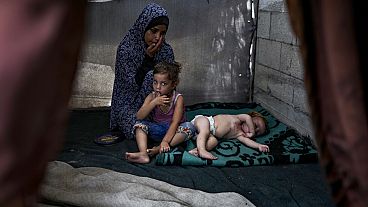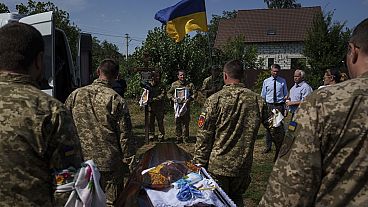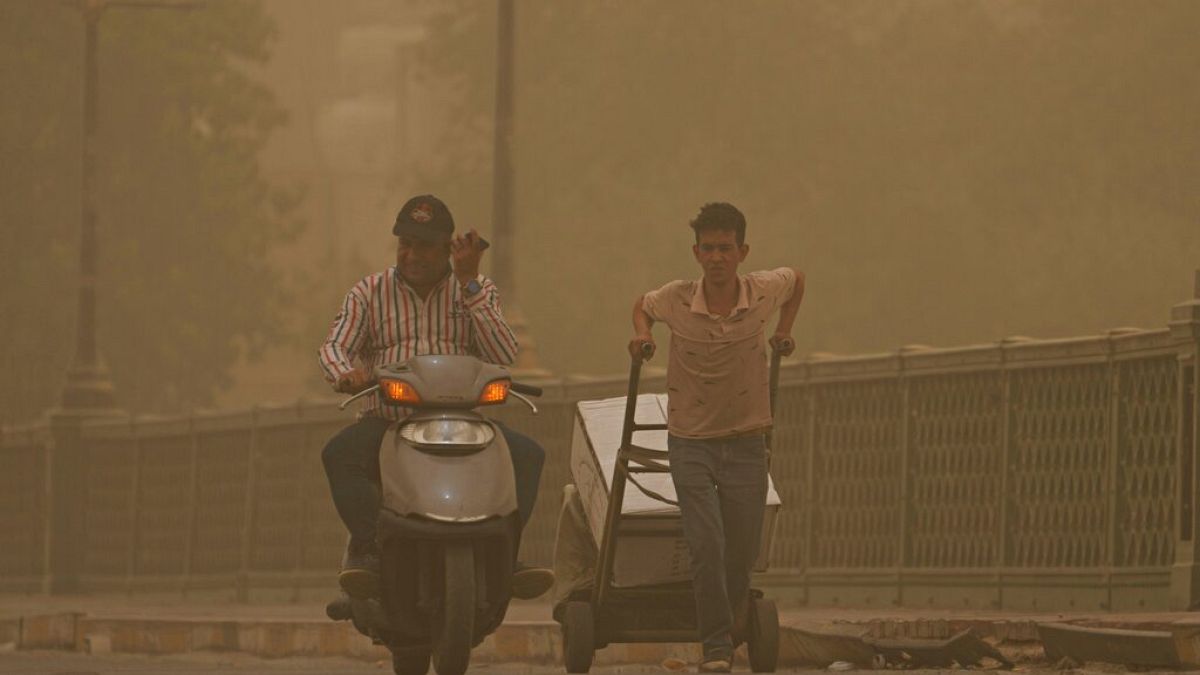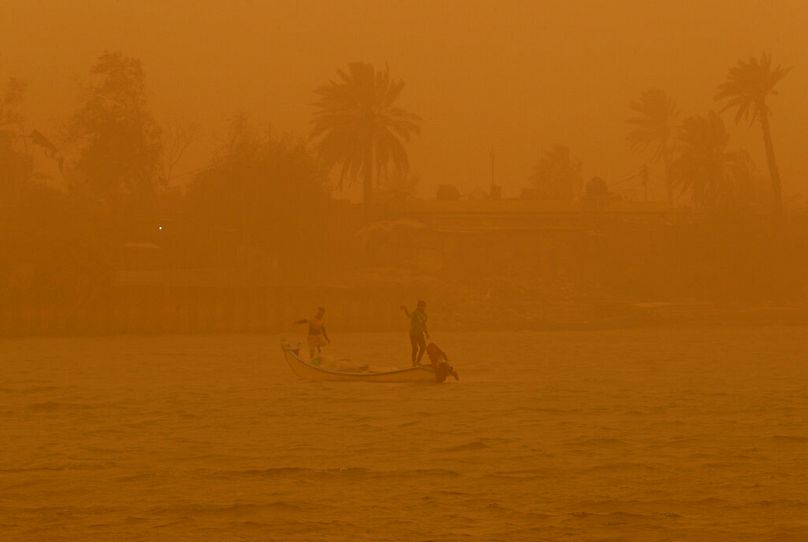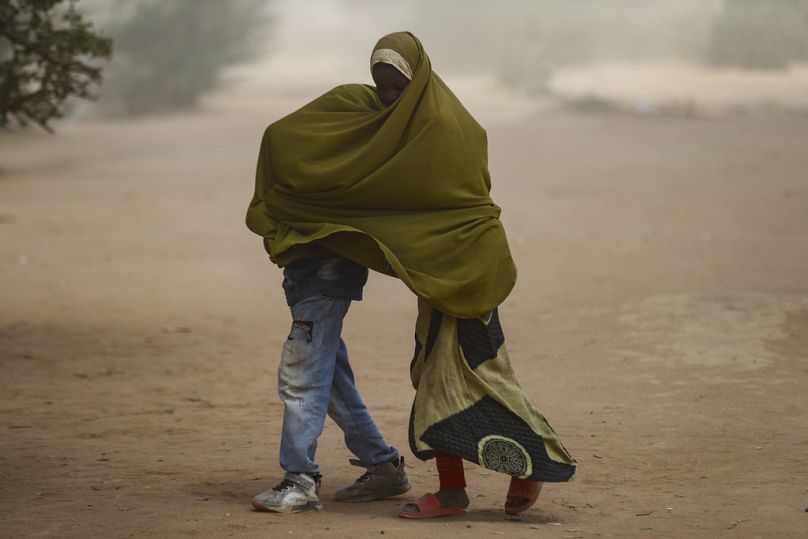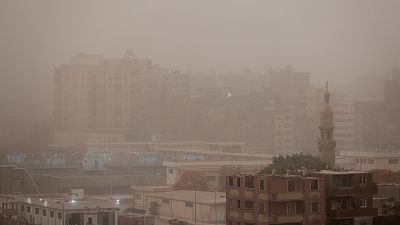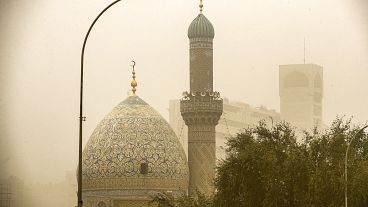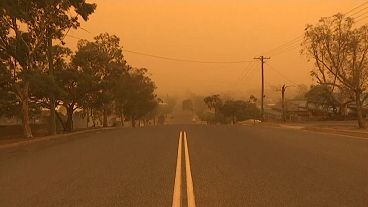Today is the first ever International Day of Combating Sand and Dust Storms.
Sand and dust storms are well known as extreme weather events. They threaten health and economies from central Africa to Europe and all the way to northern China.
Now, the UN General Assembly is taking action.
They have declared 2025 to 2034 as the official United Nations Decade on Combating Sand and Dust Storms - and it’s officially kicking off on Friday (12 July).
The resolution was brought by the Group of 77, a powerful UN group of 134 developing countries and China.
Their representative, Uganda's UN Ambassador Godfrey Kwoba, told the 193-member assembly the initiative aims to “halt and mitigate the negative effects of sand and dust storms” through “international and regional cooperation.”
UN members then adopted the resolution by consensus and a bang of the gavel by assembly president Dennis Francis.
What will the International Day of Combating Sand and Dust Storms look like?
The adoption of the resolution on Wednesday came just two days before the International Day of Combating Sand and Dust Storms, to be held annually on 12 July.
The commemoration day was declared by the General Assembly in 2023 and, this year, will be marked for the first time.
Countries across the globe will be encouraged to observe the day with educational and other activities which raise public awareness of the importance of combating sand and dust storms.
They’ll be urged to particularly focus on increasing knowledge surrounding public health, improving land use, enhancing food security and livelihoods and promoting resilience to climate change.
How dangerous are sand and dust storms really?
In a 2022 report, the United Nations Convention to Combat Desertification said sand and dust storms have “increased dramatically in frequency in recent years.”
It said storms can exacerbate respiratory illnesses like asthma, kill crops and livestock and increase desertification - though documentation of their impact is fairly limited.
The convention estimated that trillions of kilograms of sand and dust enter the atmosphere annually, largely in dry lands and sub-humid regions with little vegetation.
The majority of emissions result from natural conditions - but that droughts and climate change can also exacerbate the issue.
In fact, the report estimated that “at least 25% of global dust emissions originate from human activities” - namely unsustainable land management and water use.
How do the storms affect Europe?
While the storms cause intense issues in parts of Africa and Asia, they also have a knock on - and sometimes serious - effect on Europe and Europeans.
The meteorological phenomenon, known as ‘Calima’ or ‘Scirocco’, occurs when fine sand and dust particles from the Sahara are lifted into the atmosphere and transported by prevailing winds.
It can happen at any time of the year and lasts between three and five days.
The Sahara desert's arid environment causes the soil to become fine and easily lifted by strong winds.
Such winds are able to lift millions of kilograms of sand and dust into the atmosphere, which then create a dense, suspended cloud that is capable of travelling thousands of kilometres.
Canary Islands dust storms are common
Situated off the coast of northwestern Africa, the Canary Islands are often affected.
Dust particles settle, causing respiratory problems, especially for people with pre-existing issues.
Calima also causes poor visibility and disruptive weather, forcing the suspension of some public services, including transport.
It can be even more serious. In 2020, the wind spread three wildfires and forced about 2,000 residents to evacuate in Tenerife and Gran Canaria.
At the time, Gran Canaria had the worst air quality in the entire world due to the dust - with about 40 times the particle density considered safe by the World Health Organisation.
It’s not just the Canary Islands which suffer. Calima has also affected a number of other countries in southern Europe, including Malta, Italy - especially Sicily - and Greece - especially Crete.
They tend to feel the effects of Calina mostly during the spring months when strong southerly winds can bring Saharan dust over the Mediterranean.
What will happen during the United Nations Decade on Combating Sand and Dust Storms?
As part of the initiative adopted by the UN, which has been in the works for decades, the General Assembly has tasked its UN Food and Agriculture Organisation with the challenge.
Going forward, they’ll promote mitigation practices in affected countries, including “sustainable land use management, agroforestry, shelterbelts, afforestation or reforestation and land restoration programs.”
The resolution also calls for global cooperation to enhance early warning systems and sharing weather information important to forecasting storms.

